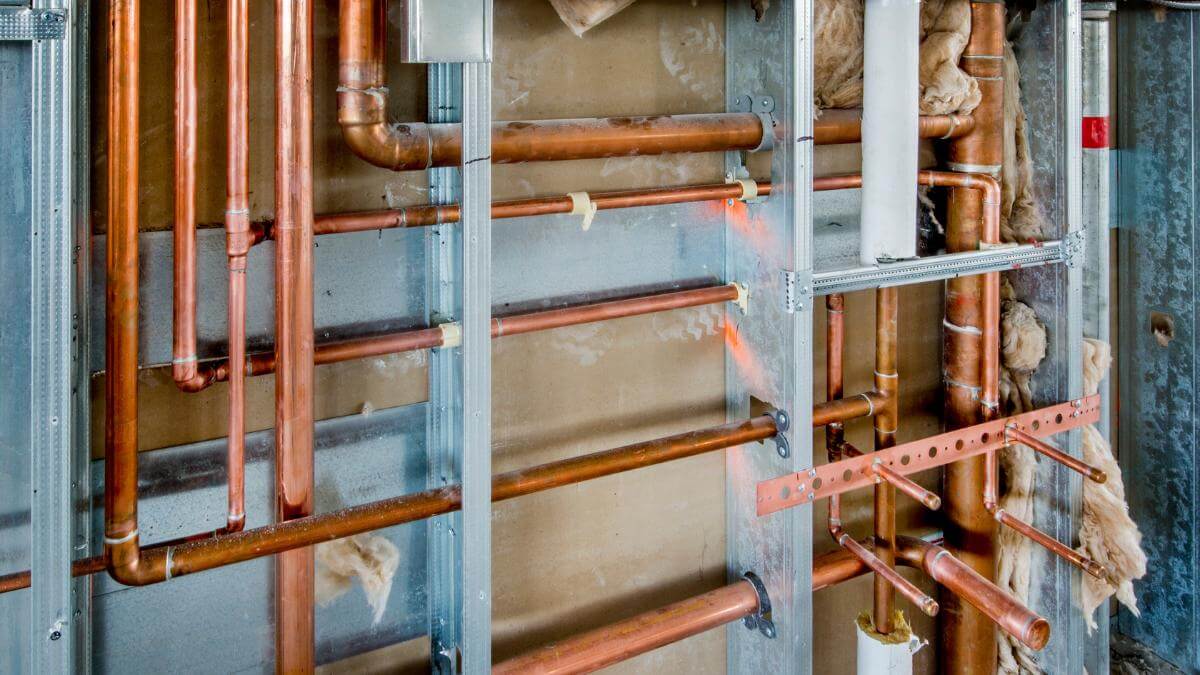Building a custom home is a thrilling journey filled with choices that shape the space you’ll call your own. Among the myriad decisions, one aspect that stands out early in the construction process is rough plumbing. Often underappreciated, rough plumbing is the unsung hero that lays the groundwork for a fully functional, efficient, and personalized plumbing system in your dream home. This article aims to delve deeper into the crucial role of rough plumbing and why it’s an indispensable phase in the construction of a custom home.
Foundation for Functionality:
The rough plumbing stage serves as the backbone of your home’s plumbing system. Before the walls and floors are sealed, pipes and fixtures are strategically installed, setting the stage for a comprehensive and functional plumbing network.
This phase ensures that water flows seamlessly to every faucet, shower, and appliance in your custom home.
Customization and Personalization:
Custom homes are a unique expression of individuality. Rough plumbing provides homeowners with the flexibility to customize the placement of fixtures according to their preferences.
Whether it’s the location of sinks, showers, or additional water features, this stage allows for the integration of plumbing into the overall design and layout of the home.
Efficiency in Design:
Well-planned rough plumbing contributes to the overall efficiency of the plumbing system. A careful layout minimizes the risk of water hammer, a phenomenon where water suddenly stops or changes direction, causing noisy and potentially damaging vibrations.
A smoothly designed rough plumbing system ensures a continuous and efficient flow of water throughout the house.
Future-Proofing for Upgrades:
Forward-thinking during the rough plumbing phase allows homeowners to future-proof their homes for potential upgrades.
Whether you plan to add a new bathroom, upgrade fixtures, or install modern appliances, a well-designed rough plumbing system accommodates these changes without significant disruptions or structural modifications.
Compliance with Building Codes:
Adhering to local building codes and regulations is not just a legal requirement but a crucial element of a safe and structurally sound home.
The rough plumbing phase must meet these standards, ensuring that the plumbing system is installed with precision and compliance, preventing future issues and costly corrections.
Preventing Water Damage:
Meticulously executed rough plumbing significantly reduces the risk of water damage. Properly installed pipes and fittings minimize the chance of leaks, safeguarding the structural integrity of the home.
This preventive measure not only ensures a dry and safe living environment but also helps avoid potentially costly repairs down the line.
Integration with Other Systems:
Rough plumbing doesn’t exist in isolation; it’s part of a larger network of essential systems within a home.
Coordination with electrical, HVAC, and structural elements during the rough plumbing phase is vital to creating a harmonious and efficient living space. This integration enhances the overall functionality and longevity of the home.
Quality Assurance and Inspection:
The rough plumbing phase undergoes rigorous inspections to ensure compliance with building codes and industry standards. Inspectors scrutinize factors such as proper pipe sizing, secure connections, and coordination with other building systems.
This thorough quality assurance process guarantees that the plumbing system is not only compliant but also meets the highest standards of safety and functionality.
Cost-Efficiency in the Long Run:
While investing in quality rough plumbing may seem like an initial expense, it proves to be cost-efficient in the long run. A well-installed plumbing system has fewer maintenance issues, reducing the overall cost of homeownership.
The longevity and reliability of a meticulously planned rough plumbing system translate into savings on repairs and replacements over the years.
FAQs:
Q1: Why is rough plumbing important in custom home construction?
A: Rough plumbing sets the foundation for the entire plumbing system, ensuring functionality, customization, and compliance with building codes.
Q2: Can I make changes to the plumbing layout after the rough plumbing phase?
A: While possible, changes after rough plumbing may be costly and complicated. It’s advisable to plan and finalize plumbing layouts before this stage.
Q3: How does rough plumbing contribute to energy efficiency?
A: Properly designed rough plumbing allows for efficient hot water distribution, contributing to overall energy efficiency in the home.
Q4: What happens during a rough plumbing inspection?
A: Inspectors check for compliance with building codes, proper pipe sizing, secure connections, and coordination with other building systems.
Q5: Does rough plumbing impact the resale value of a custom home?
A: Yes, a well-designed and functional plumbing system enhances the resale value by ensuring long-term durability and minimizing potential issues.
Conclusion:
In the intricate tapestry of custom home construction, rough plumbing emerges as a foundational thread that weaves together functionality, customization, and long-term viability. Acknowledging its importance and investing in a well-executed rough plumbing phase ensures that the plumbing in your custom home not only meets the immediate needs but stands resilient against the test of time. As you embark on the journey of building your dream home, don’t overlook the critical role that rough plumbing plays in shaping the future comfort and efficiency of your living space. It’s not just about pipes; it’s about laying the groundwork for a home that stands as a testament to your vision and lasts for generations to come.

A group of home improvement enthusiasts and bathroom design experts, combines in-depth knowledge and a shared passion to deliver engaging, informative content that guides readers through the world of bathroom innovation and style.

Leave a Reply